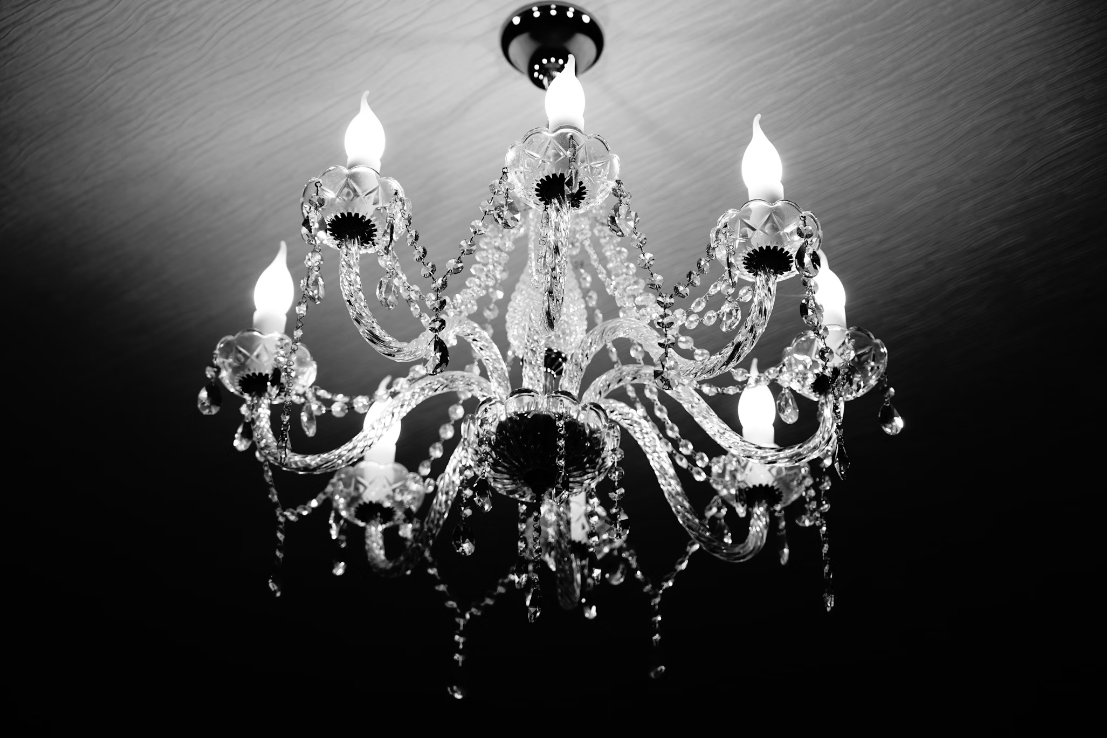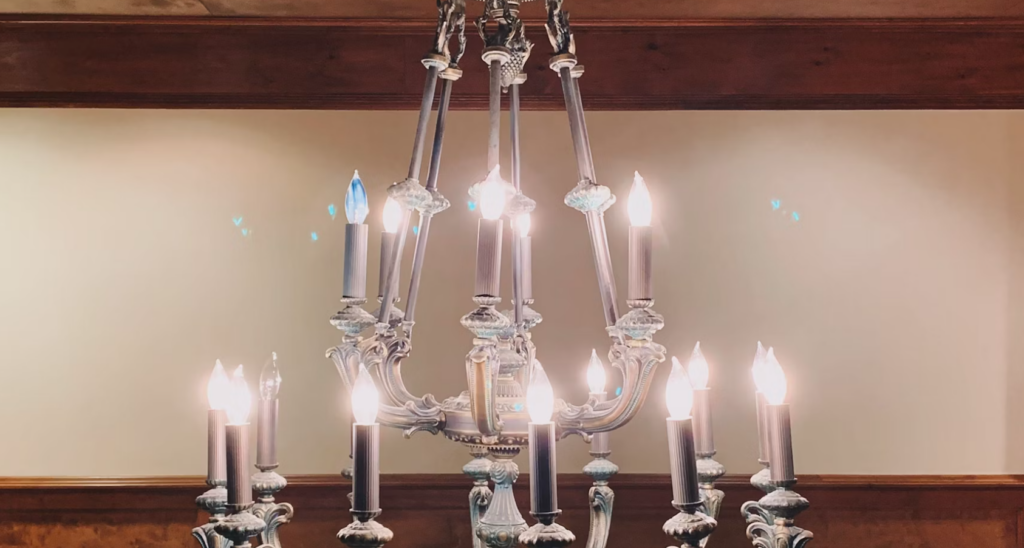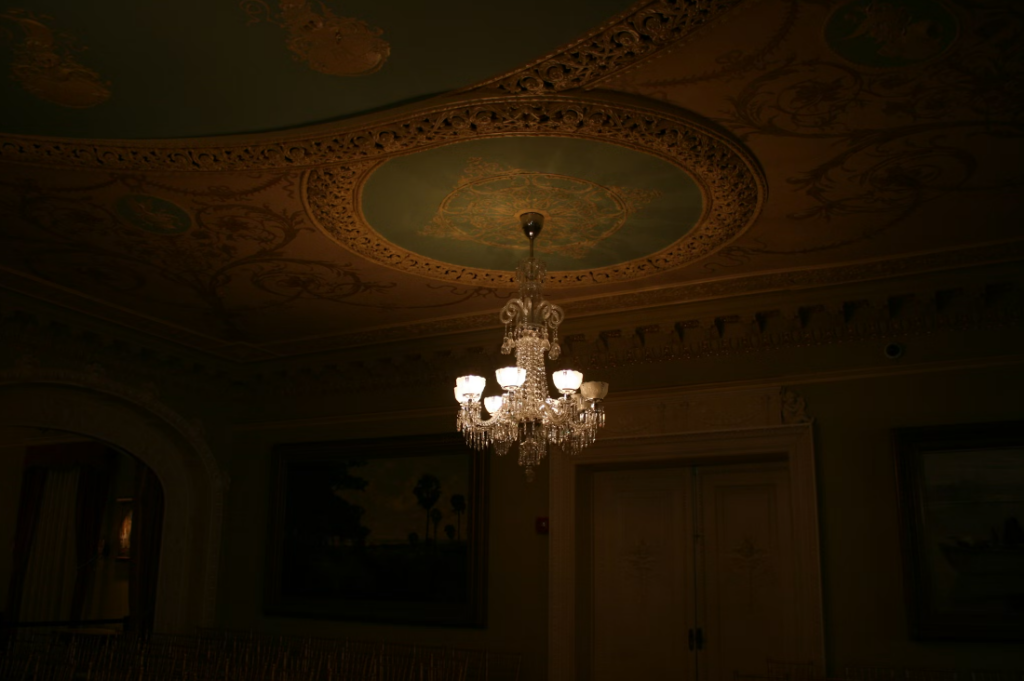
Chandeliers are the stunning centerpieces that add elegance and charm to any room. But when one of those sparkling bulbs goes out, it can be a real eyesore.
You’re left with an awkward dark spot amid the brilliant glow, ruining the whole vibe.
Don’t worry, though – I got you.
In this post, I’ll shed some light on why one light in chandelier not working, and how to fix it.
So, what could be causing that one bulb in your chandelier not to light up?
There can be a number of reasons, some very obvious and some more sophisticated. The solution depends on the cause:
Also Read: Chandelier won’t hang straight
Before we get into the nitty-gritty of chandelier repairs, let’s cover the bases.

Have you tried switching out that burned-out bulb for a fresh one? I know, I know, it seems too easy, but you’d be surprised how often that does the trick.
If a new bulb doesn’t solve the problem, then we can dig deeper.
One of the most frequent reasons for a single light outage is a problematic bulb socket.
Over time, these sockets can become loose, making poor contact with the bulb’s base.
This could happen from the heat emitted by the bulb or from people being a little too forceful when changing out bulbs.
To test if the socket is the issue, try this neat trick:
Use a multimeter to measure the voltage across the socket when the non-working bulb is removed. If you’re getting the full voltage reading, but it drops significantly when you touch the multimeter’s probes to the bulb receptacles, that’s a red flag that the socket needs attention.
BTW Check Out Our Luxury Feather Crystal Chandelier
The electrical wiring inside that fancy chandelier could also make one light not work.
Corroded wires, loose connections, or broken insulation can make it impossible for that one bulb to get sufficient power. This issue could arise from the light fixture’s age, previous botched repairs, or shoddy manufacturing.
Here’s how you can investigate further:
Turn off the power, then open up the junction box where the chandelier’s wires connect.
Carefully inspect the wires, looking for any obvious damage, loose wire nuts, or disconnected wires leading to the dead socket.
If it seems off, you may need to re-wire at least a portion of the chandelier.
The dimmer switches that let you control your chandelier’s ambiance could actually be causing your single light issue.
A faulty dimmer will supply inconsistent power, and make one or more bulbs go dark.
The easiest way to determine if the dimmer is at fault is to bypass it completely. Flip the circuit breaker back on and use the hard-wired switch, if available, to power the chandelier directly.
BTW Check Out Our Contemporary LED Crystal Ceiling Pendant
If that problem bulb suddenly brightens up, you’ll know to replace that dimmer switch.
If you’ve tried all the basic troubleshooting and replacing components, but one light in chandelier is still not working, it may be time for more extensive repairs or replacement.

An internal short, damaged ballast, or incorrect voltage could be harder issues to pinpoint without pro assistance.
Electricity is nothing to take lightly, so if you’re feeling out of your element here, don’t be a hero.
Reach out to an electrician who can properly do the chandelier repair safely and effectively.
It’s better to spend a little money than risk injury or fire damage.
While one dead bulb is no fun, it does offer a great reminder to give your chandelier some well-deserved TLC. Periodically dusting the fixture and bulbs will prevent excessive buildup that can lead to problems. When changing bulbs, handle them gently to avoid loosening sockets.
And keep an eye out for any signs of damage so small issues don’t spiral into costly repairs down the line.
Starting with the basics like replacing the bulb and checking for faulty sockets, moving on to inspecting internal wiring and dimmer switches.
If these efforts prove unsuccessful, seeking professional help is the wise choice.
And remember – regular maintenance and care can prevent such issues in the future, keeping your chandelier shining bright for years to come.




Leave a comment